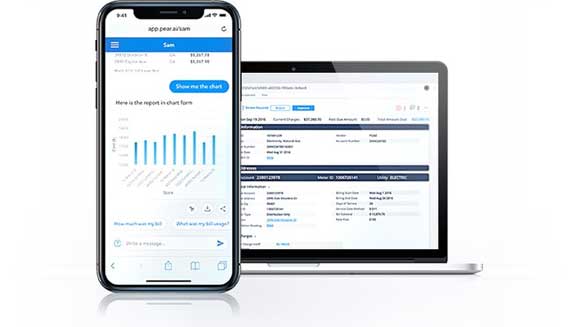5 Ways to Use Analytics to Manage Your Energy and Achieve Budget Certainty
Today, energy data is more accessible and abundant than ever. That’s good news for companies that want to analyze that data and use it to better manage their energy strategies and achieve budget certainty.
However, given the abundance and complexity of that data, companies often struggle with putting it to use. It can be challenging to aggregate the data from across multiple locations, access that data in a uniform format and have the expertise to apply it to your business operations.
Advanced analytics tools can simplify that process. With these tools, you can turn your energy data into actionable insights to help you more effectively manage energy costs and consumption. And that can ultimately lead to more predictable budgeting and financial planning for your company.
Related Content:
Changes and unpredictability in the energy market can make it difficult to manage your budget. Learn what causes these fluctuations and the steps your business can take to achieve stability.
Download the Managing Your Energy Strategy Through Uncertainty guide.
Advanced energy data analytics can help improve your energy management, and ultimately your bottom line, in the following ways:
1. Identify anomalies that may impact your energy bill
If you have multiple utility and energy bills, it can be challenging to check every line item within every bill each month. Without that verification, however, you may miss critical anomalies that can impact your energy bill, such as billing errors, operational issues, or sudden and drastic changes in your energy usage.
Analytics tools can automate the process of validating those bills, so you can be sure that every bill is accurate and free from anomalies. This enables you to worry less about sudden spikes in your energy bills and more accurately plan your month-to-month budget.
2. Pinpoint energy inefficiencies
Beyond analyzing the line items on your monthly bills, analytics tools can help you pinpoint specific inefficiencies within your facilities.
For example, you might see your energy bill increase over time, but on your own, you may not be able to pinpoint the exact source of that increasing cost. The right analytics tools could identify your aging lighting system as the main driver of your rising energy consumption. Based on this information, you could make the decision to implement energy efficient LED lighting upgrades.[1]
Without analytics tools, it could take months for you to find the source of energy inefficiencies. With those tools, however, you can quickly identify and address the issues to minimize any negative impact on your energy consumption and budget.
3. Monitor energy usage data over time
For more accurate planning and budgeting, it can be helpful to monitor and analyze your energy usage over time. Analytics can show you historical data about how your company’s energy use has changed over a range of different time periods.
This can enable you to notice patterns, such as if your company’s natural gas usage is generally higher during the winter or how the size of your building and occupancy rate fluctuations impact your energy consumption.[2]
 Analytics tools can help you see these trends (often in an easily digestible, visual manner), so you can anticipate similar events in the future and adjust your budget and energy purchasing strategy accordingly.
Analytics tools can help you see these trends (often in an easily digestible, visual manner), so you can anticipate similar events in the future and adjust your budget and energy purchasing strategy accordingly.
Related Content:
Managing your energy strategy requires relevant and timely market information. Get access to insights that will help you make informed energy decisions. Register for our monthly Energy Market Intel Webinar.
4. Predict the changing market and usage patterns
To go one step further, advanced analytics tools can even make energy usage predictions for you. These tools can monitor and analyze historical data and alert you about how to adjust your future energy use.
Analytics tools from Constellation and its affiliate take not only your company’s specific usage into account, but also incorporate overall market data. Through the use of artificial intelligence, Constellation is able to deliver alerts to let you know when to expect energy costs to be higher, so you can make timely, informed decisions about your energy purchasing strategy.
5. Compare energy usage from multiple facilities
If your business operates multiple facilities, such as several buildings within a university or a range of franchise locations, analytics can be helpful in comparing each location’s energy usage.
This could enable you to determine that one building or location in particular generates a large portion of your energy usage. By investigating this further, you could identify how to fix the issue. You might learn that adjusting the building’s operational hours would allow your staff to use energy-heavy devices during off-peak hours, which could help manage your energy costs. Or, you might find an opportunity to improve the building’s energy performance by implementing energy efficiency upgrades.
There is an incredible amount of actionable insight to glean from your energy data. With the right analytics tools, you can better understand how your company is using energy, how to make your energy use more efficient and how to better manage costs related to your energy strategy, ultimately helping you achieve budget certainty.
Constellation offers a number of analytics tools that can provide these advanced insights. The Constellation Navigator Utility Bill Management Platform leverages AI to help you find opportunities to increase efficiency and manage your energy usage and spend. Our web-based customer service platform, visually maps out key insights into your energy usage and offers advanced reports that can help you take control of your energy management.
To start using analytics to generate actionable insights from your energy data, contact us today. And for a closer look into how to achieve stability in your energy management strategy, access our guide, “Managing Your Energy Strategy Through Uncertainty.”
[1] “Learn About LED Lighting,” ENERGY STAR
[2] “Commercial buildings have gotten larger in the United States, with implications for energy,” U.S. Energy Information Administration
























